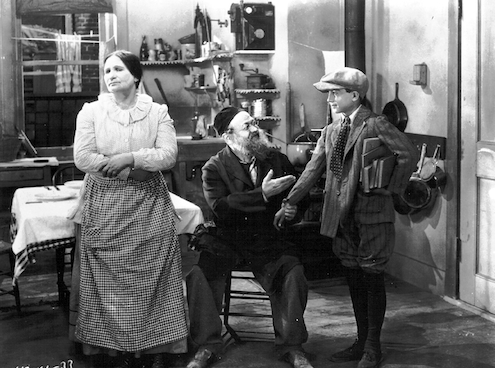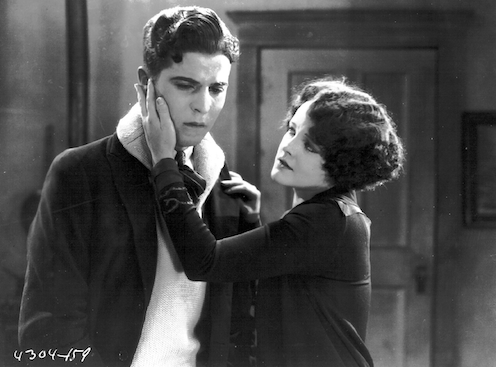His People
Full Description
THE FILM
HIS PEOPLE is a wonderful melodrama straight out of the Lower East Side: Two brothers, Sammy and Morris Cominsky (George Lewis and Arthur Lubin) are the sons of poor immigrant Jewish parents. They take very different paths to realize their vision of the American dream in this lively and entertaining tale of life in 1920s New York.
Tough but good-natured Sammy decides to become a prizefighter to help pay for his older brother’s law school education and ease his family’s financial burden. Not wanting his parents to know he is a prizefighter, Sammy fights under the name “Kid Rooney.” But a nosey neighbor spills the beans and Sammy’s observant father (Rudolph Schildkraut in a nuanced performance that is both funny and poignant) is horrified. “G-d of Israel! That a son of mine should sink so low.”
Meanwhile Sammy’s older brother Morris, a social-climbing rat in a three-piece suit, is so embarrassed by his family’s poverty and old-world ways that he proclaims himself an orphan. But his prizefighting brother will soon have to come to the whole family’s rescue in a boxing showdown. Can he save the family and win over his Irish girlfriend? Oy! -Mike Silver
THE MUSIC
Appearing live to play his new score for HIS PEOPLE are New York composer/instrumentalist Paul Shapiro and his jazz sextet, featuring sax/flute/clarinet, trumpet, cello, piano, bass and drums. Shapiro is best known for his releases on John Zorn’s Tzadik label entitled Midnight Minyan and It’s in the Twilight that combine his love for jazz and his Jewish roots. He has been featured on NPR and can be heard on recordings by Lou Reed, Queen Latifah, Jay-Z and many others. The New York Sun has called his music “a brilliant synthesis of klezmer and hard bop.” Shapiro was a founding member of the Brooklyn Funk Essentials and a longtime member of the Microscopic Septet.
Of his new score for HIS PEOPLE, Shapiro states: “The tonalities are informed by Jewish music from antiquity to the post-klezmer ‘Yiddish Swing' of the 1940s and 50s. There will be jazz sonorities and improvisation woven into that fabric. We don't have the advantage of ‘locking to picture,' but this is part of the challenge and the fun of performing it ‘live-to-picture'!”
Director(s)
Country(ies)
Language(s)
Release Year
Festival Year(s)
Running Time
91
Cast



